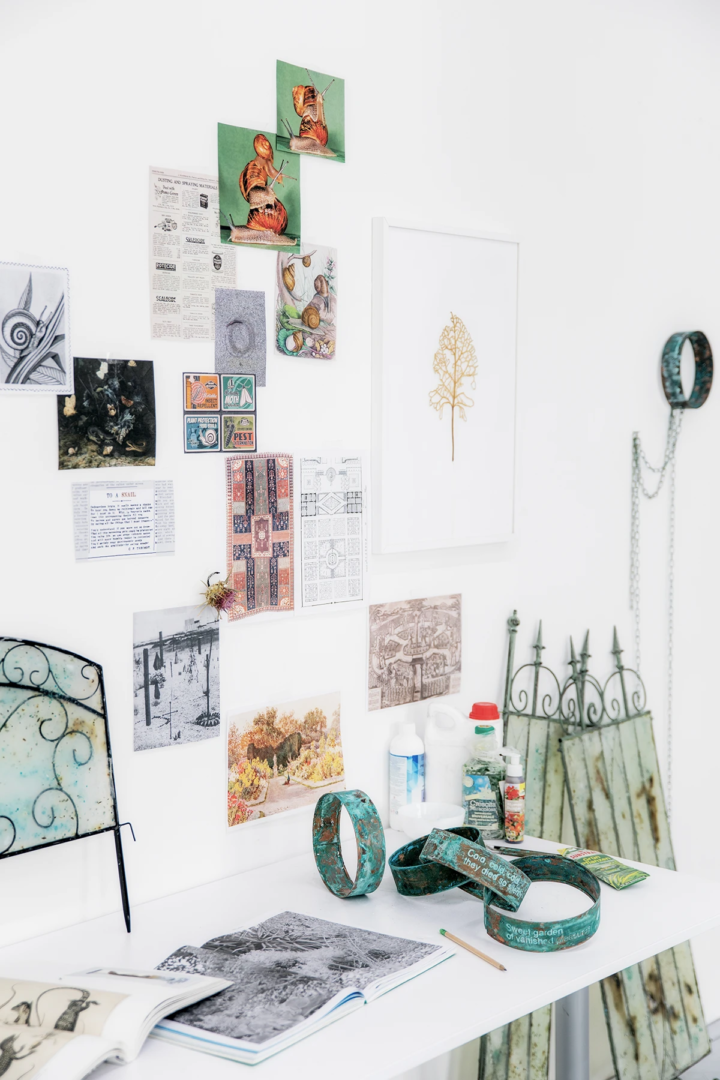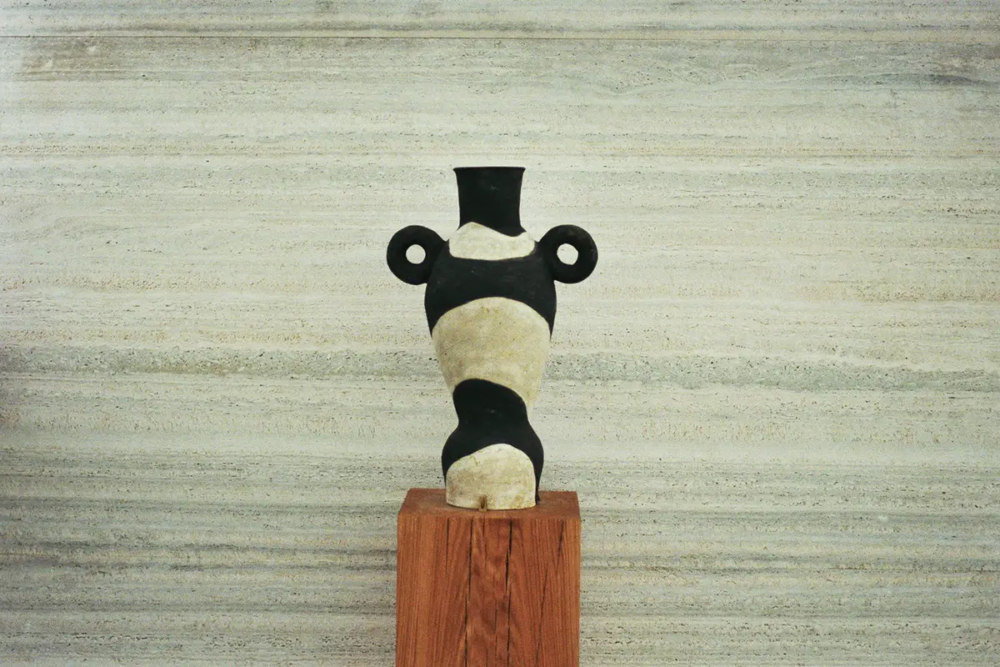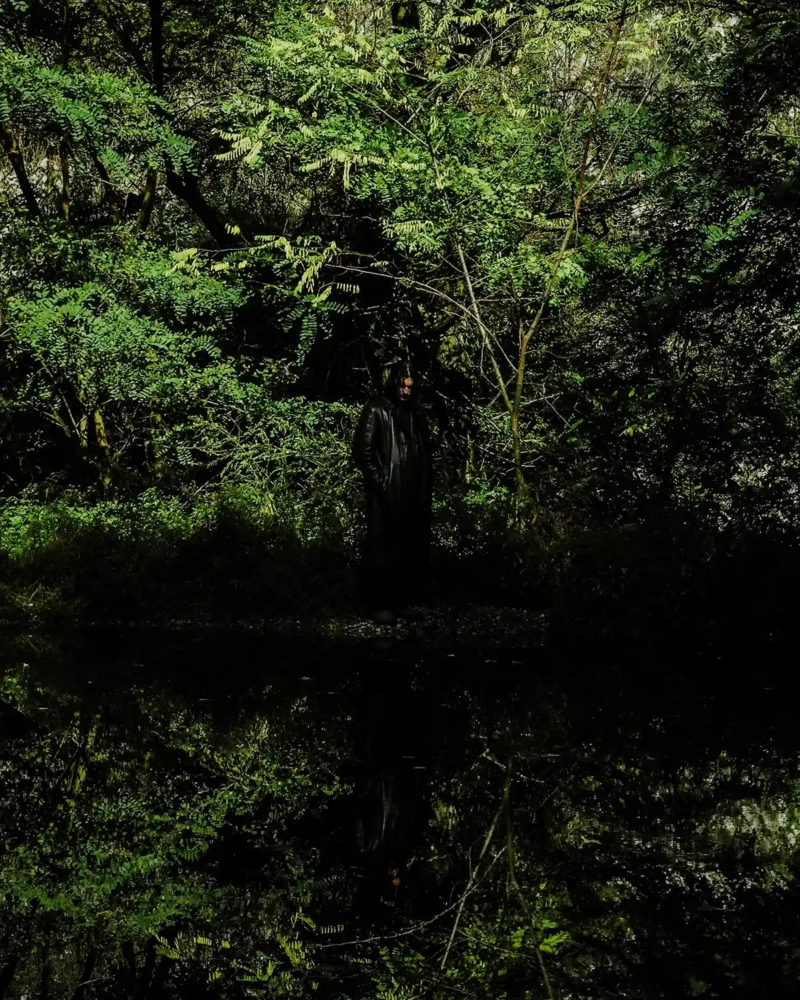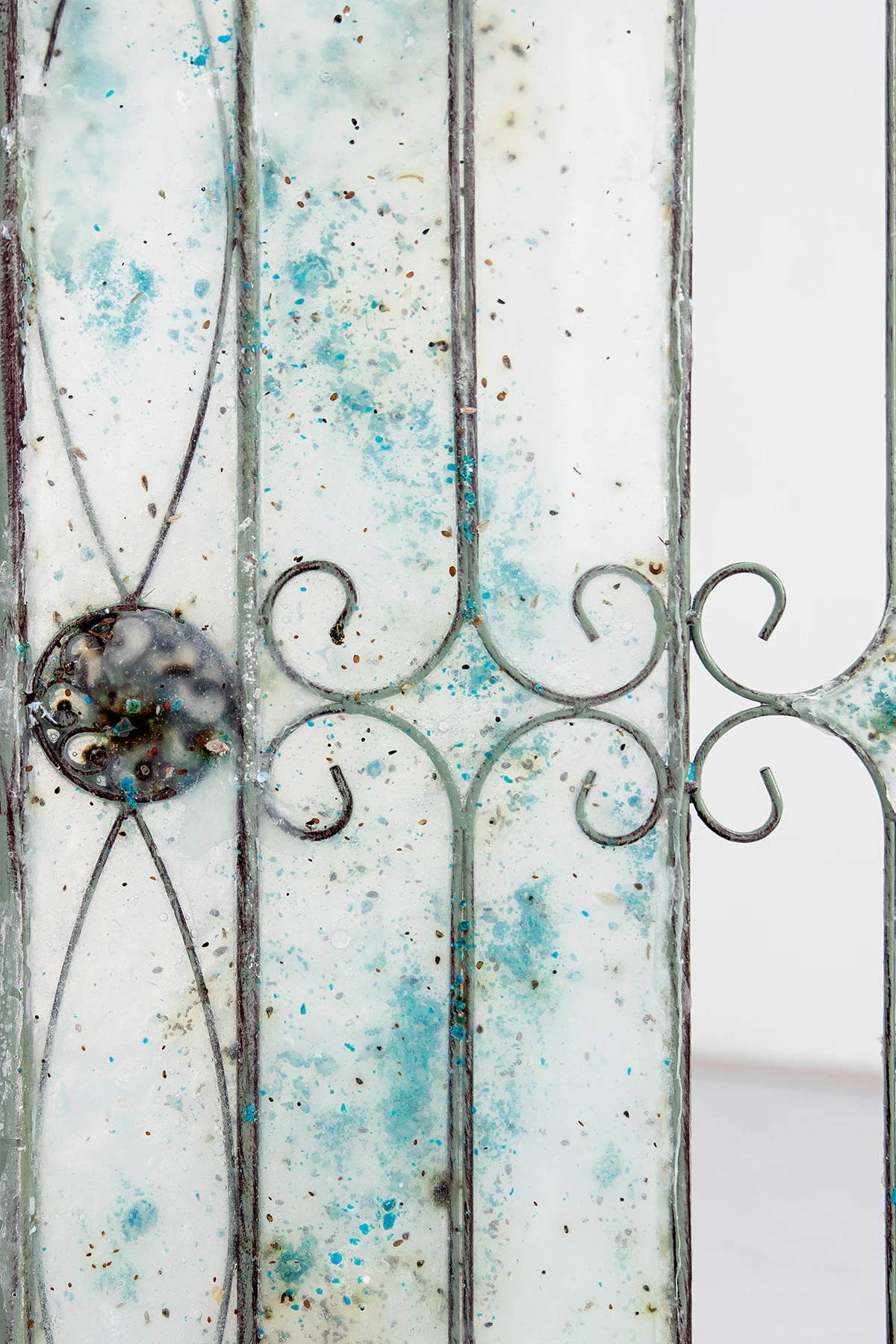
Snails as Symbols: from garden pest to cultural mirror
Snail mucin, gardening blogs, Derek Jarman, and heterotopias: a multi-layered reading of the garden as a metaphor for systemic violence
Snails, Soap, and Poisons: garden as a site of power and control
The advent and widespread use of pesticides altered the collective Western image of snails. Before synthetic pesticides became prevalent in the mid-20th century, snails were seen as a natural part of the garden ecosystem. With the rise of chemicals and the productivity needs of monoculture farming, snails were redefined as pests to be eradicated, turning snails from an occasional nuisance to the biggest garden nemesis. The system of power produced the subject that subsequently came to represent. The tools to repel them reshaped the narrative around them, and thus the need to eliminate them became reality.
Towards the end of the Twentieth century, on the other hand, snail monocultural farming, known as heliciculture, became industrially structured. In these snail farms, massive numbers of snails are harvested to produce snail slime mainly for the beauty industry. Snail mucin became more and more a popular ingredient in anti-aging and skin-repair products, such as soaps, serums and moisturizers.
In my artistic practice, gardening tools and materials become vessels through which these imbalances and hidden violences materialize. I’m interested in interrogating this system of interconnected hierarchies and the oppressions they enable, highlighting these power relations. I engage with the undesirable, the marginalized, the overlooked, the inappropriate Other, as a way of thinking with and through them, in order to challenge narratives and reimagine equitable forms of coexistence.
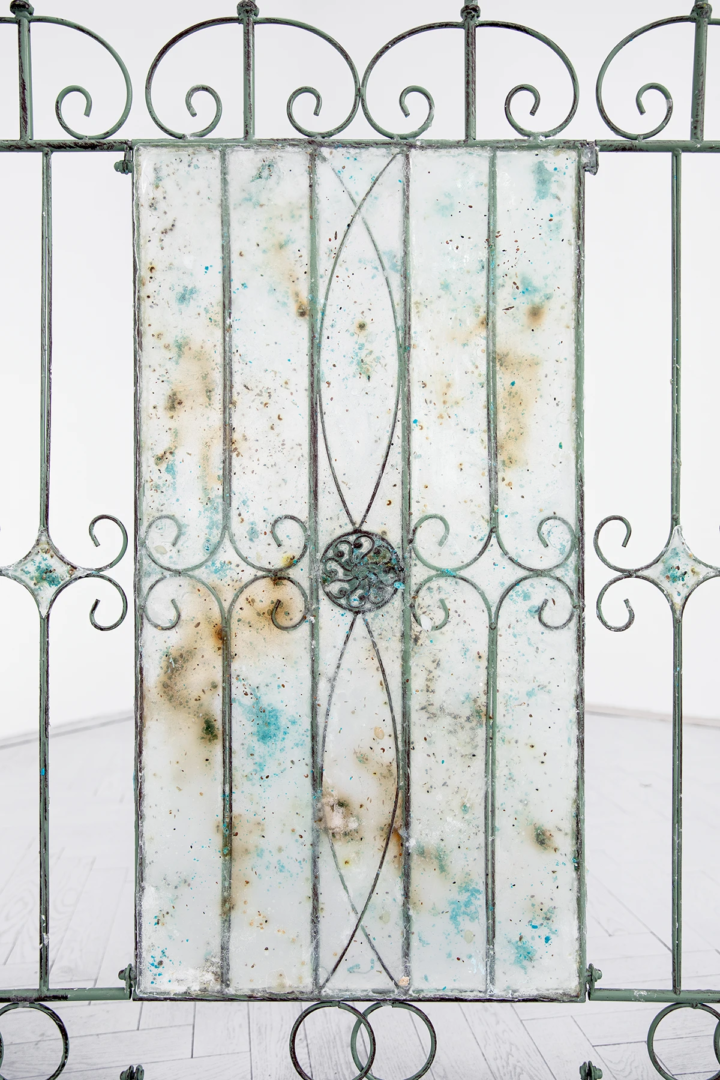
For the Gathering of Snails, Slugs and Sluggards: soap, slime, and silent violence
In the work For the Gathering of Snails, Slugs and Sluggards, a garden fence is filled with snail slime soap. It is a soap produced from the harvest of snail monocultures as a beauty product for human skin, for its anti-aging, anti-inflammatory, antibacterial, hydrating, and wound healing properties. Within the soap, they float in mid-air: copper sulfate, salt and snail pesticides—a collection of materials used in gardening to kill snails—as well as a selection of plant seeds of specific vegetables and flowers that are snails’ favorites to eat, and thus the reason why they are killed in gardens.
The fence stands as the modular element that defines the border of a garden, that divides what is its inside and its outside, what is accepted and rejected. The fence becomes the display of matters of opposite tensions, whose mixture narrates the silent violence snails are subject to inside the ecology of a garden.
Here, soap becomes a quiet metaphor for the utopian ideals so often projected onto the garden, the dream of a domesticated, obedient nature: scrubbed clean, ordered, sanitized and controlled. Yet soap, one of the most intimate of materials in our daily routines, touching our skin each day, takes on a paradoxical weight when infused with toxic agents—pesticides, for instance—substances designed not to nurture, but to eliminate.
This contradiction lays bare the uneasy violence behind our longing for perfection, for a landscape without wilderness, without threat, without resistance. The act of introducing poison into a cleansing medium links our bodies to these toxins. It reflects on how deep the cultural fracture runs between us and the more-than-human world. We’ve rendered nature as Other, as something outside of us, a canvas to be painted over, forgetting, or perhaps denying, that we are part of it. Every chemical released, every synthetic transformation enacted, inevitably circulates back into the shared ecosystem of which our bodies are a part.

A Dizzy Stillness: poison, repetition, and the death spiral
In A Dizzy Stillness, a soap trace on the floor is a transposition of a snail slime trace captured in a picture found on an online gardening blog. This is one among many peculiar images that appear in these blogs portraying snails and slugs going in circles until their death. This looping motion, almost ritualistic in its repetition, is not a dance but a symptom: it is the neurological collapse that follows chemical exposure. Poisoned by pesticides, the snail loses orientation, spins inward, and dies within the curvature of its own confusion.
This phenomenon is explained as the result of snail chemical poisoning: when snails get poisoned by pesticides, their neurological system collapses, making them lose orientation and agency and making them go in circles until they die. The trace is therefore enlarged, human-scaled, and made tangible in soap laced with the very pesticide that caused the original death-spiral. It is a ghost made of its own killer. At the same time, the voluptuous circularity of the trace, combined with its positioning on the floor, intrinsically refers to the repetitive gestures of cleaning, hygiene and the removal of unwanted traces.
From a Snail Memoir: copper rings and queer ecology
Lastly, in the work From a Snail Memoir, different copper rings are linked one to the other and hung from the ceiling, resembling an old, rusty, ornamental rain-chain. Yet these are not just aesthetic relics; they are repurposed slug rings, tools once used to repel snails from garden beds. Copper, in contact with the moist underside of a snail, triggers a tiny electroshock: an invisible fence of discomfort, designed to keep the “unwanted” at bay.
Now rusted and stripped of their utilitarian role, the rings are transformed into carriers of fragile verses etched on their surface. These fragments come from a poem written by Derek Jarman in Modern Nature, a personal diary where he reflects both on his personal garden and on his condition as a marginalized, queer and HIV-ill subject. These fragments here become imaginative stimuli on the marginalized-queer position snails occupy in the production-aesthetic logics of a garden. The snail, marked as pest, becomes emblematic of broader systems that seek to cleanse, sanitize, and control, often at the cost of that which is tender, disobedient, or uncontained. In these poetic assemblages, the garden is no longer a utopia, but a catalyst of our own contradictions, where care and cruelty entwine in the shape of a spiral or in the shimmer of a slimy trace left behind.
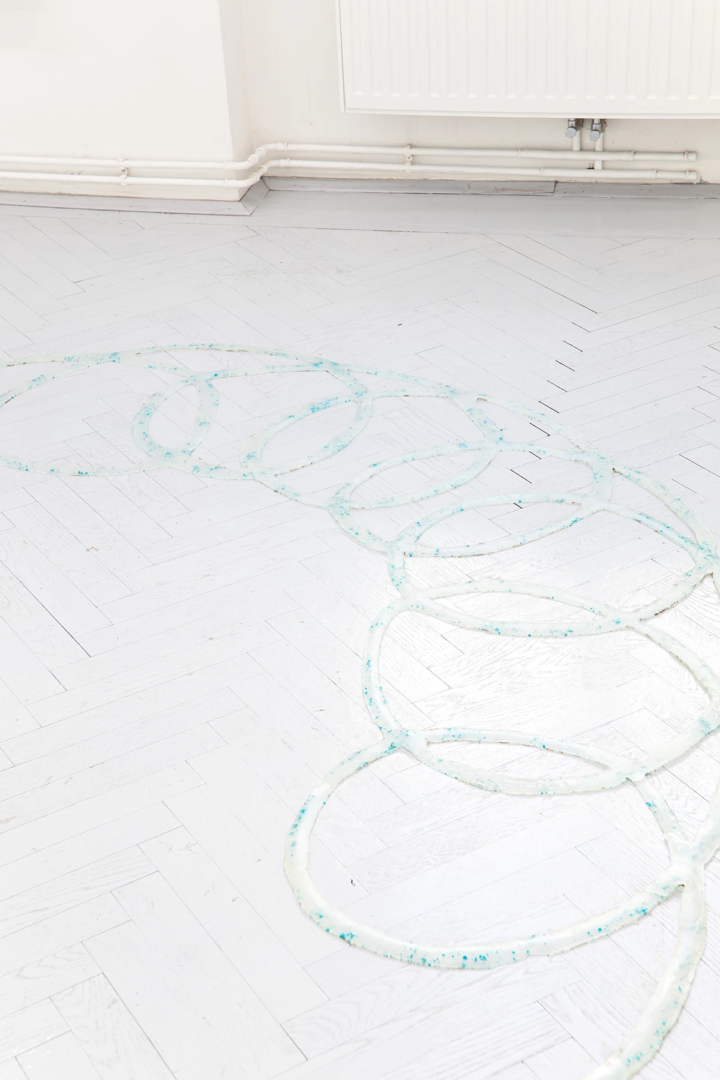
The origins of the Garden: paradise or enclosure?
The etymology of the word garden is a tapestry of dualities. Its roots trace back to the Gothic gart, meaning ‘enclosure’, hence a spatial construct of boundaries. Yet, it mirrors the biblical Greek parádeisos, meaning the ‘garden of Eden’, from which the concept of paradise is derived—hence of a utopian dimension, a locus amoenus. To peer into what lies behind the fence of a garden, to heed the whispers coming through its freshly trimmed hedges, is to navigate this duality.
A garden is a planned and designed space whose cartography illustrates a longing for control in the natural environment: symmetry, measurement and order are key identifying features that distinguish the garden from uncultivated wilderness. The tradition of garden plans, with their geometric forms, reflects how gardens have been envisioned as blueprints for societal and moral order, embodying human ideals of rationality. This is epitomized by the ancient Persian garden carpets: aerial representations of a perfect archetypical garden, divided into four geometric sections by paths and waterways, representing the garden as a utopian paradise, a symbolic perfection of order and coexistence.
Yet, beneath these paths of utopian perfection lies an undercurrent of control. Even the wildest garden bears the mark of human dominion over nature. Through the introduction of new species, cultivation, weeding, breeding, the application of chemicals, deforestation, and land enclosure, humanity asserts its authority over the natural world.

Garden as verb: language, power, and the control of nature garden as verb: language, power, and the control of nature
Domestic gardens, botanical gardens, and greenhouses have historically contributed to shaping our relationship with nature, constructing a collective image of sanitized and domesticated beauty. Gardens are cultural constructs, artificial landscapes concealing the infrastructure that sustains them.
Michel Foucault, in Of Other Spaces: Utopias and Heterotopias, precisely reflecting on the Persian garden rugs, defines the garden as a heterotopia: gardens are mirrors, a world within a world, a microcosm reflecting the broader relationships between nature and culture. For Foucault, the garden is both the smallest part of the world and a reflection of its totality: a microcosm where political, economic, and social powers converge.
Alhena Katsof, in her essay Mythological Formulations: Autochthony at the Root of the Matter, notes that the English word garden emerged as a verb, meaning ‘to lay out and cultivate’, until the 1570s. This evolution of the term, from noun to verb, wasn’t random or coincidental. It is causal to a number of seismic, perspectival shifts that took place over time. This shift was marked by the rapid enclosure of public lands in England, the rise of secular humanism, and the onset of colonial expansion. During this period, the ontological distinction between man and nature was solidified, embedding itself in the collective imagination.
Garden is not merely a noun or a possessive, but a verb, a doing. To plant a garden is to draw a line in the earth, to demarcate a space, to enclose it and take control over it. Rules are subsequently set, defining what is accepted and rejected from the garden, distinguishing the desirable from the undesirable, order from chaos, the domesticated from the wild, the guests from the pests.
No garden exists cleansed of the force required to maintain it. Indeed, no garden exists without violence. As Foucault asserts, systems of power produce the subjects they subsequently come to represent. Viewing gardens as systems of power allows us to dissect and display the subtle and silent violences, hierarchies, and power relations established with the otherness.
